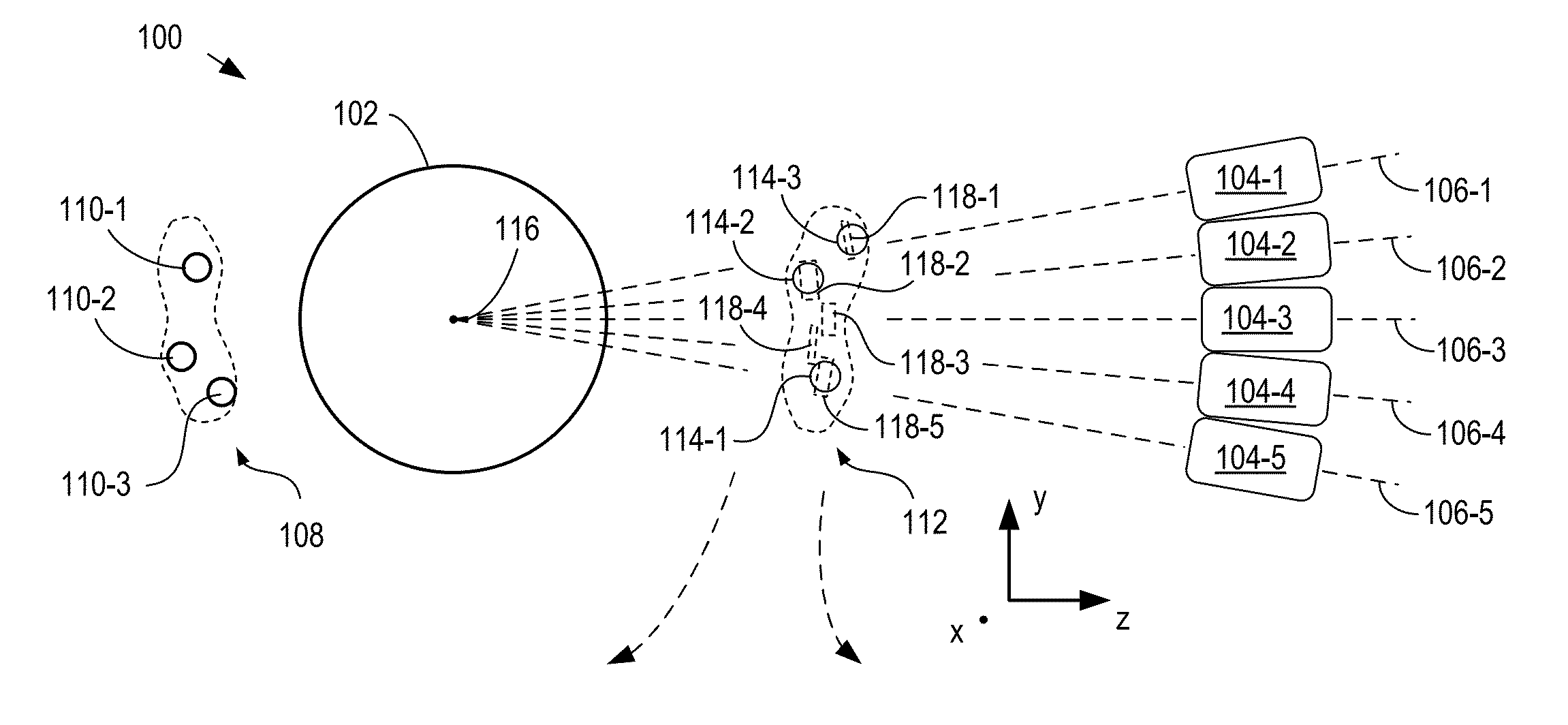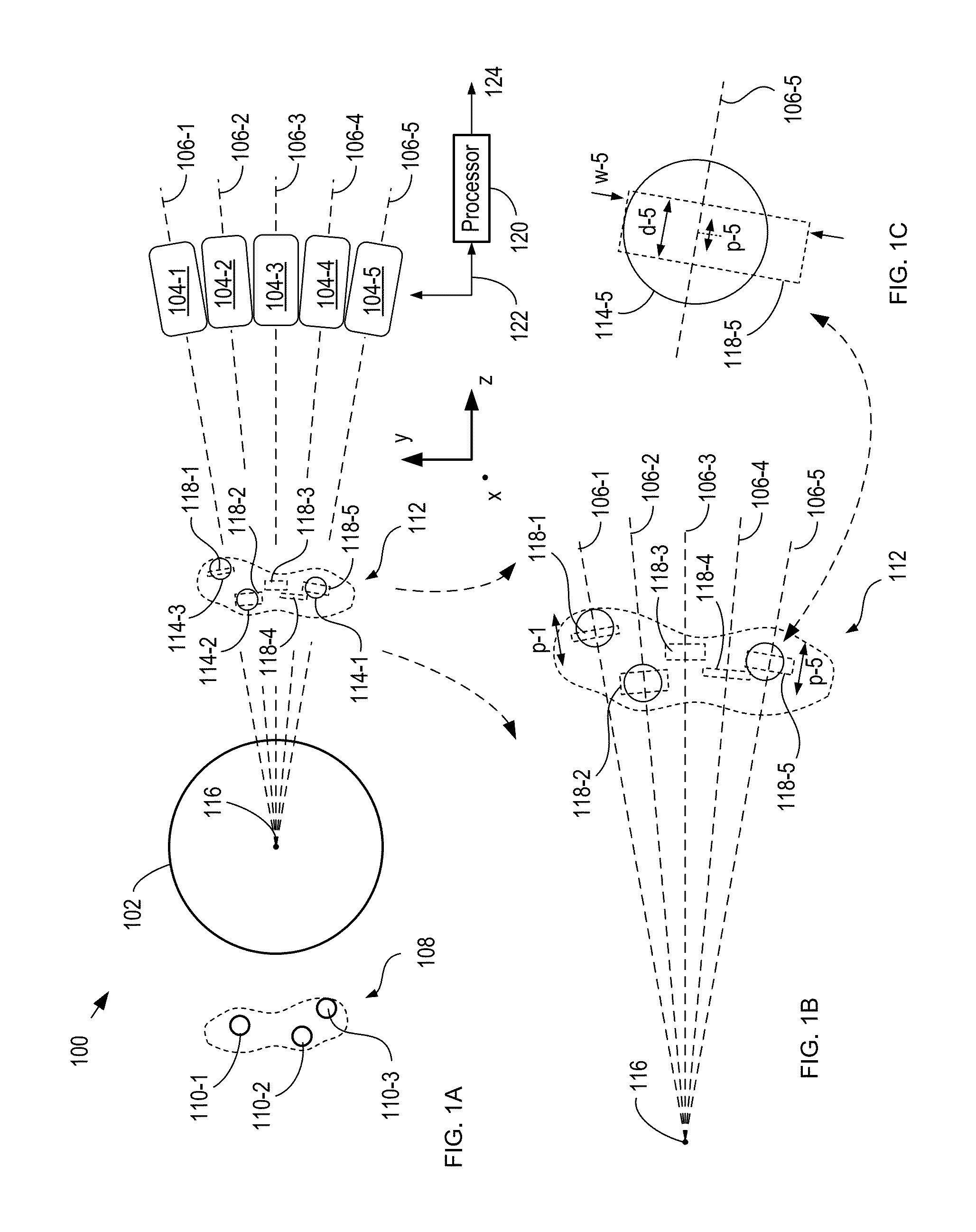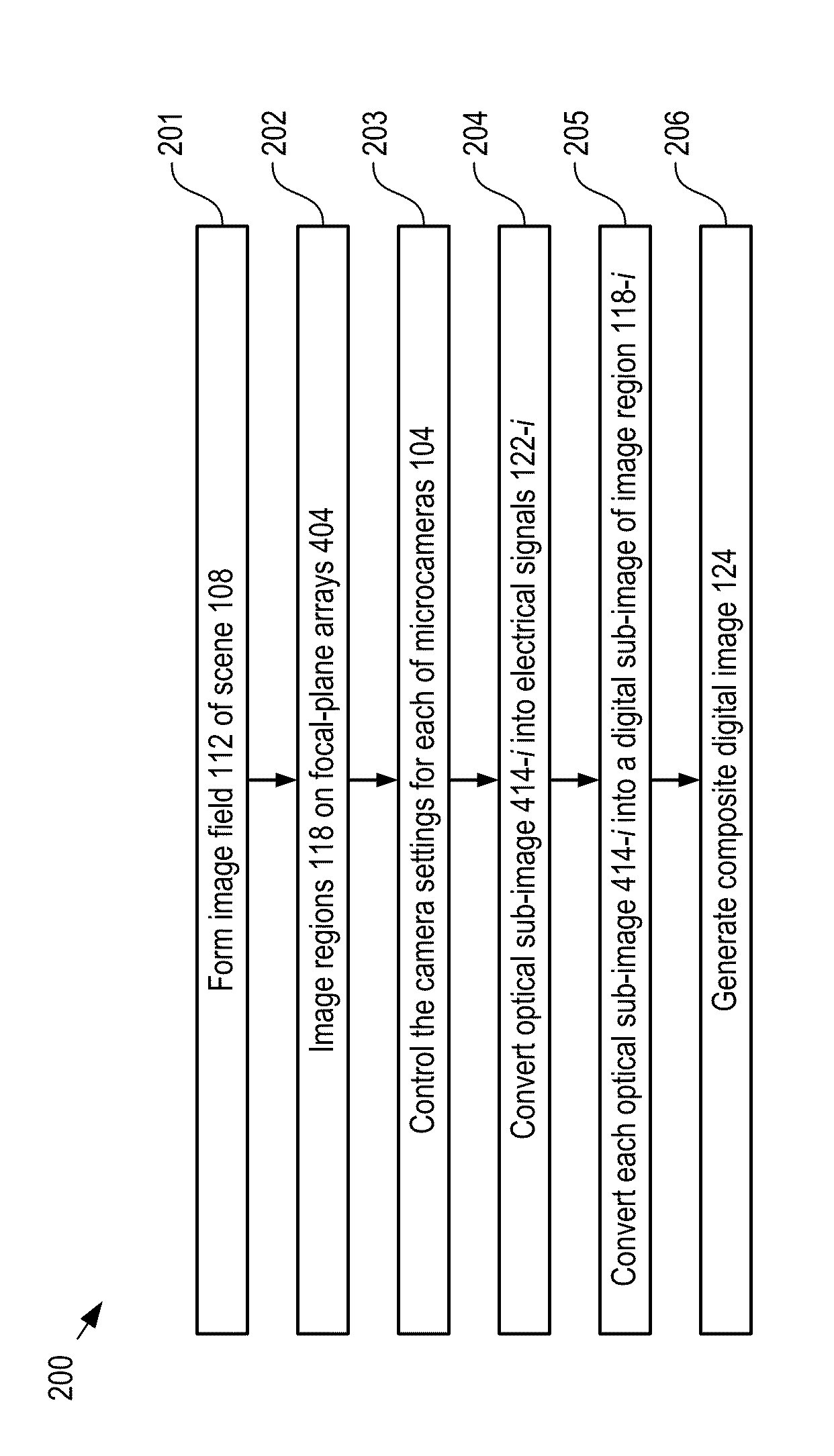Multiscale optical system having dynamic camera settings
a dynamic camera and multi-scale technology, applied in the field of optics, can solve the problems of large lenses, exacerbated problems, and insufficient camera capture of the diversity of a complex scen
- Summary
- Abstract
- Description
- Claims
- Application Information
AI Technical Summary
Benefits of technology
Problems solved by technology
Method used
Image
Examples
Embodiment Construction
[0034]This application claims priority of parent cases: U.S. patent application Ser. No. 13 / 095,407, which is a continuation-in-part of U.S. patent application Ser. No. 12 / 651,894 (now U.S. Pat. No. 8,259,212. As disclosed in the parent cases, a multiscale optical system comprises a single objective lens (which can be either a monocentric lens or a non-monocentric lens) and an array of microcameras, each of which includes a microcamera (e.g., one or more lenses) and a focal-plane array. The objective lens and the microcameras collectively image a scene onto the plurality of focal-plane arrays as a plurality of optical sub-images. Each microcamera has a unique optical axis and images a different image region of the scene through the objective lens to produce a different one of the optical sub-images. The sensor arrays convert the plurality of optical sub-images into digital representations (i.e., digital images) of portions of the scene that can then be combined to form a composite d...
PUM
 Login to View More
Login to View More Abstract
Description
Claims
Application Information
 Login to View More
Login to View More - R&D
- Intellectual Property
- Life Sciences
- Materials
- Tech Scout
- Unparalleled Data Quality
- Higher Quality Content
- 60% Fewer Hallucinations
Browse by: Latest US Patents, China's latest patents, Technical Efficacy Thesaurus, Application Domain, Technology Topic, Popular Technical Reports.
© 2025 PatSnap. All rights reserved.Legal|Privacy policy|Modern Slavery Act Transparency Statement|Sitemap|About US| Contact US: help@patsnap.com



